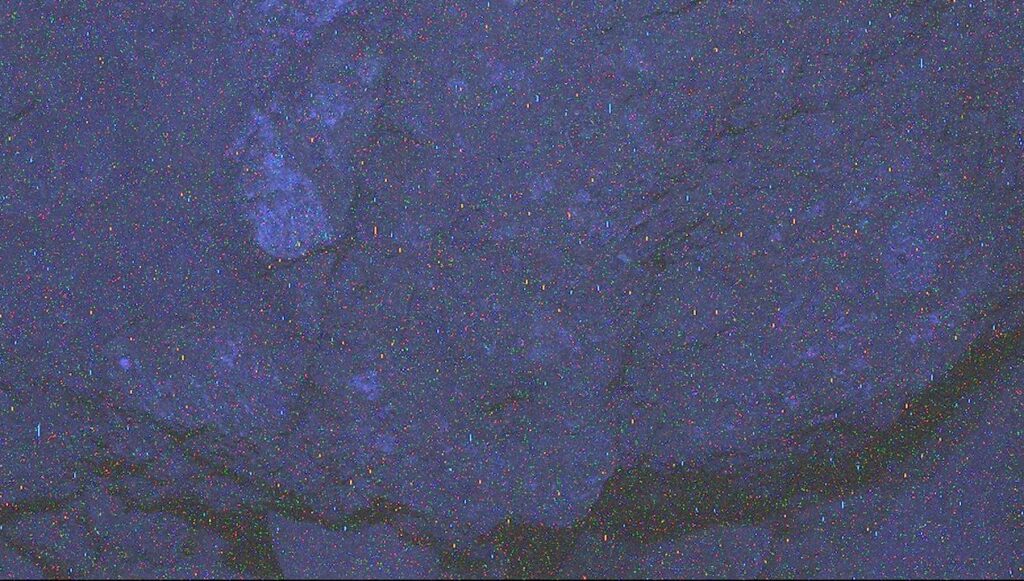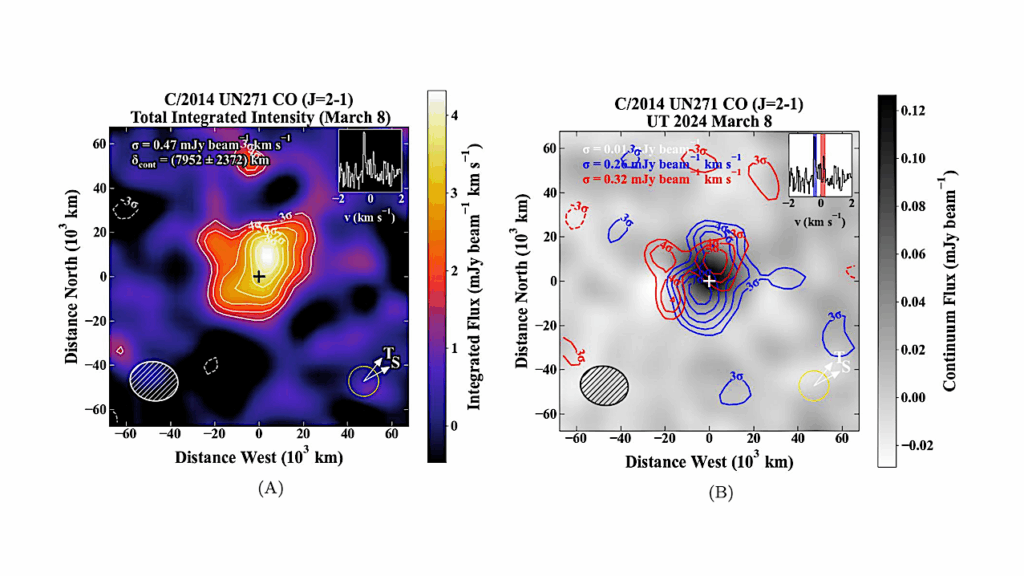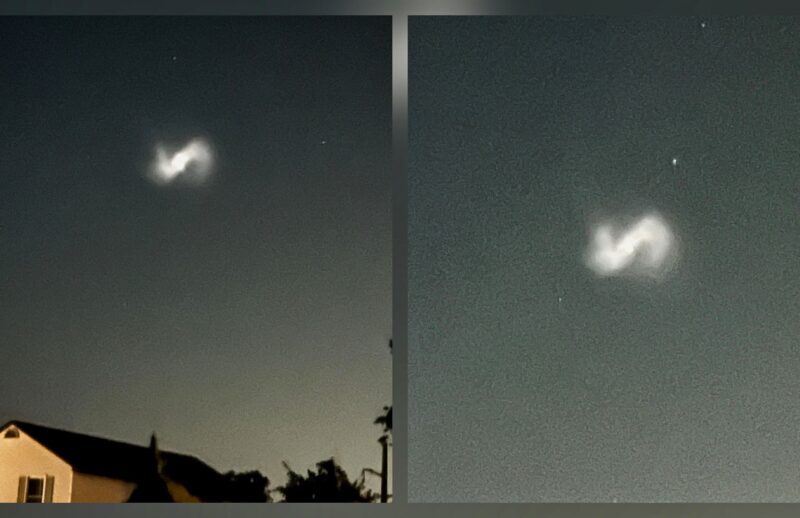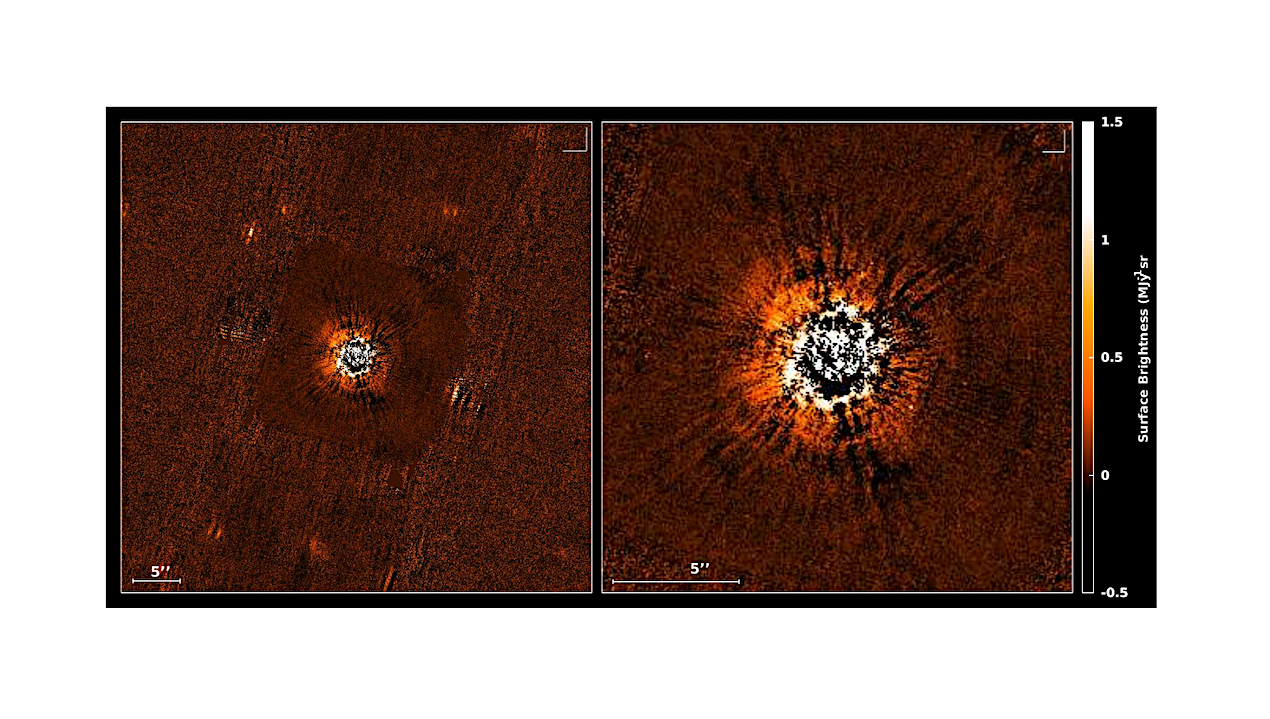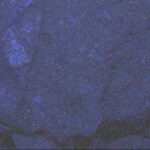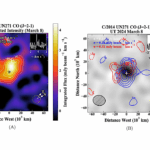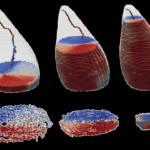Now Reading: Strict Limits On Potential Secondary Atmospheres On The Temperate Rocky Exo-Earth TRAPPIST-1 d
-
01
Strict Limits On Potential Secondary Atmospheres On The Temperate Rocky Exo-Earth TRAPPIST-1 d
Strict Limits On Potential Secondary Atmospheres On The Temperate Rocky Exo-Earth TRAPPIST-1 d
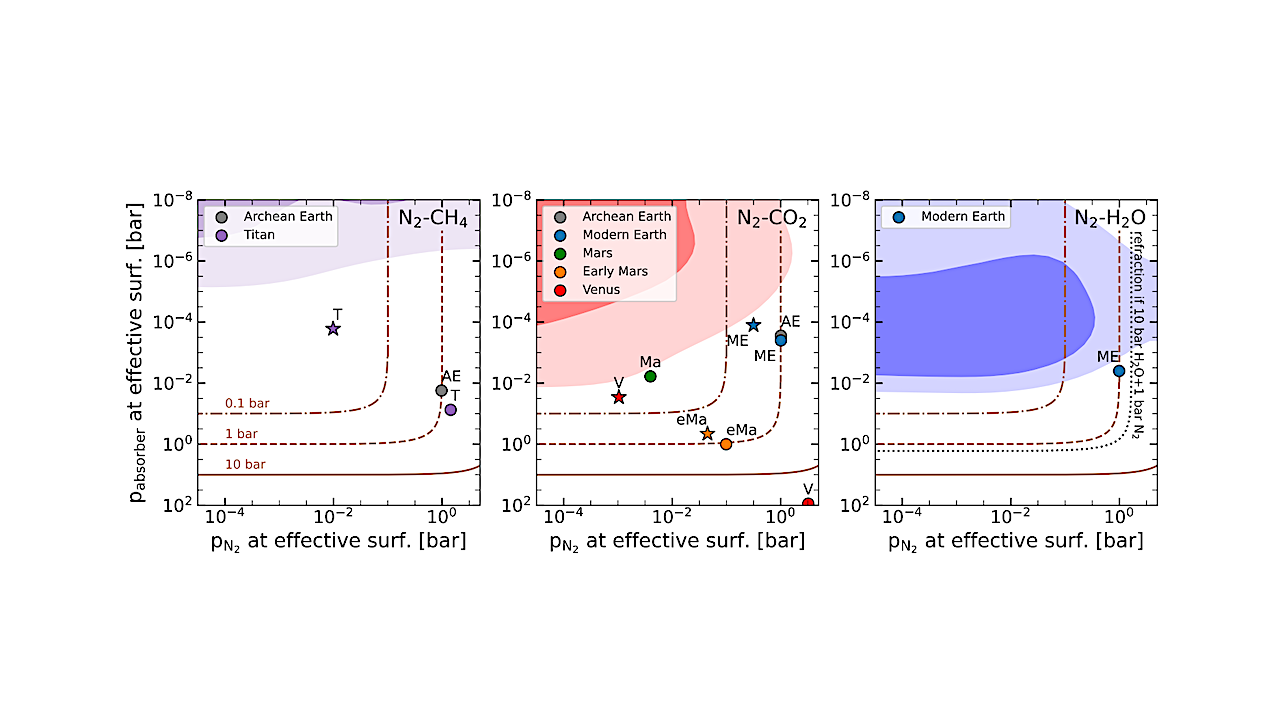

Joint posterior constraints on the surface partial pressure of key atmospheric absorbers for atmospheric scenarios similar to solar system terrestrials, with N2 as the background gas. The color shadings correspond to the posterior probability mass, and the contours highlight the 68% and 95% confidence regions from the joint retrieval in each case. The absorber in the N2-background atmosphere is labeled in the top right corner of each panel. The dashed-dotted, dashed, and solid sienna lines correspond to an atmospheric surface pressure of 0.1, 1, and 10 bar. We illustrate where typical models of Archean Earth (AE), Modern Earth (ME), and compositions for Titan (T), early Mars (eMa), Mars (Ma), and Venus (V; Encrenaz & Coustenis 2018) approximately lie relative to our constraints for TRAPPIST-1 d. Star markers correspond to specific cloudy cases, where the planet is modeled as either cloudy or cloud-free (for Titan, Modern Earth, and Venus). For the N2-H2O case, we show as a black dotted line the limit of pressures that would be cut off by refraction in a 11 bar atmosphere (10 bar H2O+1 bar N2). For thinner atmospheres, the impact of refraction on atmosphere detectability is even weaker. — astro-ph.EP
The nearby TRAPPIST-1 system, with its seven small rocky planets orbiting a late-type M8 star, offers an unprecedented opportunity to search for secondary atmospheres on temperate terrestrial worlds.
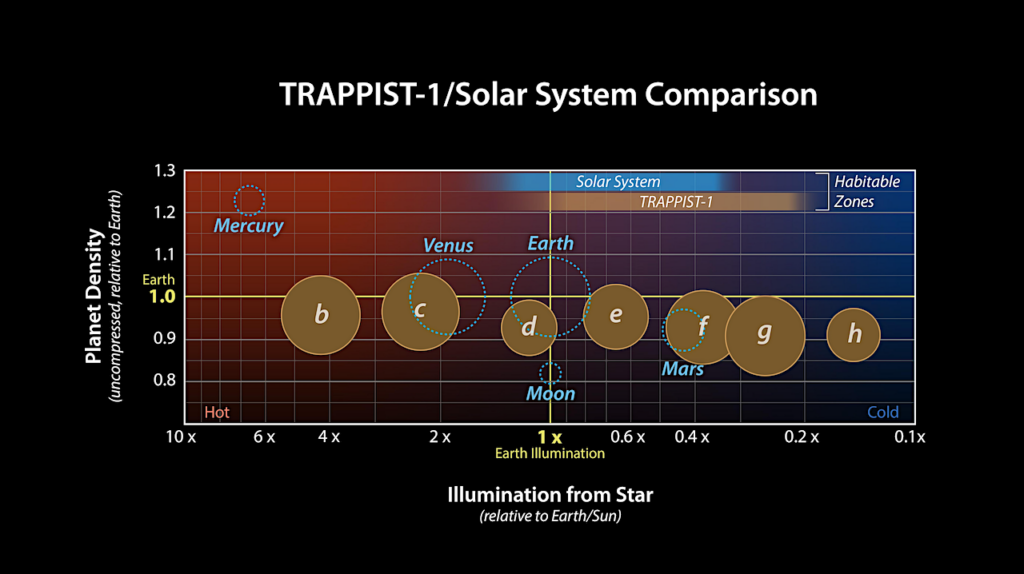
In particular, the 0.8 Earth-radii planet TRAPPIST-1 d lies at the edge of the habitable zone (equilibrium temperature ~262 K). Here we present the first 0.6-5.2 micron NIRSpec/PRISM transmission spectrum of TRAPPIST-1 d from two transits with JWST. We find that stellar contamination from unocculted bright heterogeneities introduces 500-1,000 ppm visit-dependent slopes, consistent with constraints from the out-of-transit stellar spectrum.
Once corrected, the transmission spectrum is flat within ±100-150 ppm, showing no evidence for a haze-like slope or molecular absorption despite NIRSpec/PRISM’s sensitivity to CH4, H2O, CO, SO2, and CO2. Our observations exclude clear, hydrogen-dominated atmospheres with high confidence (greater than 3σ).
We leverage our constraints on even trace amounts of CH4, H2O, and CO2 to further reject high mean molecular weight compositions analogous to Titan, a cloud-free Venus, early Mars, and both Archean Earth and a cloud-free modern Earth scenario (greater than 95% confidence). If TRAPPIST-1 d retains an atmosphere, it is likely extremely thin or contains high-altitude aerosols, with water cloud formation at the terminator predicted by 3D global climate models.
Alternatively, if TRAPPIST-1 d is airless, our evolutionary models indicate that TRAPPIST-1 b, c, and d must have formed with less than approximately 4 Earth oceans of water, though this would not preclude atmospheres on the cooler habitable-zone planets TRAPPIST-1 e, f, and g.
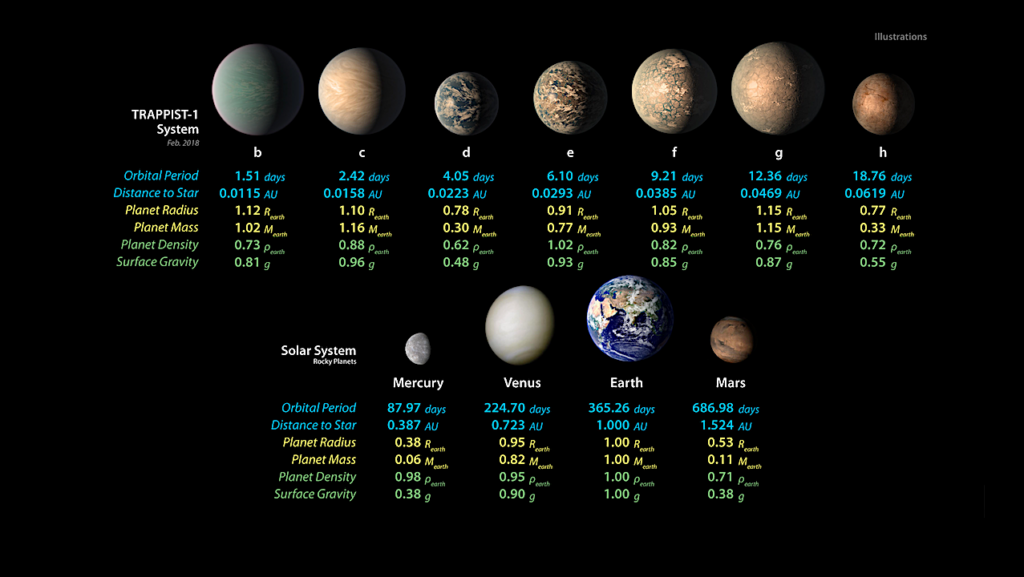
Caroline Piaulet-Ghorayeb, Björn Benneke, Martin Turbet, Keavin Moore, Pierre-Alexis Roy, Olivia Lim, René Doyon, Thomas J. Fauchez, Loïc Albert, Michael Radica, Louis-Philippe Coulombe, David Lafrenière, Nicolas B. Cowan, Danika Belzile, Kamrul Musfirat, Mehramat Kaur, Alexandrine L’Heureux, Doug Johnstone, Ryan J. MacDonald, Romain Allart, Lisa Dang, Lisa Kaltenegger, Stefan Pelletier, Jason F. Rowe, Jake Taylor, Jake D. Turner
Comments: 36 pages, 13 figures, accepted for publication in ApJ
Subjects: Earth and Planetary Astrophysics (astro-ph.EP); Solar and Stellar Astrophysics (astro-ph.SR)
Cite as: arXiv:2508.08416 [astro-ph.EP] (or arXiv:2508.08416v1 [astro-ph.EP] for this version)
https://doi.org/10.48550/arXiv.2508.08416
Focus to learn more
Submission history
From: Caroline Piaulet-Ghorayeb
[v1] Mon, 11 Aug 2025 19:10:26 UTC (3,478 KB)
https://arxiv.org/abs/2508.08416
Astrobiology,
Stay Informed With the Latest & Most Important News
Previous Post
Next Post
-
 012024 in Review: Highlights from NASA in Silicon Valley
012024 in Review: Highlights from NASA in Silicon Valley -
 02Panasonic Leica Summilux DG 15mm f/1.7 ASPH review
02Panasonic Leica Summilux DG 15mm f/1.7 ASPH review -
 03How New NASA, India Earth Satellite NISAR Will See Earth
03How New NASA, India Earth Satellite NISAR Will See Earth -
 04And Thus Begins A New Year For Life On Earth
04And Thus Begins A New Year For Life On Earth -
 05Astronomy Activation Ambassadors: A New Era
05Astronomy Activation Ambassadors: A New Era -
06SpaceX launch surge helps set new global launch record in 2024
-
 07Space Force plans new ‘Futures Command’ amid pressure to speed up modernization
07Space Force plans new ‘Futures Command’ amid pressure to speed up modernization












